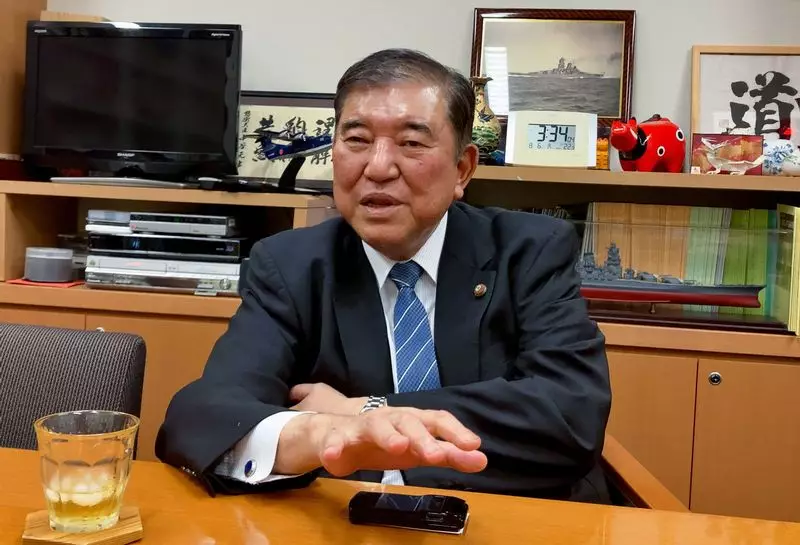Shigeru Ishiba, at 67 years old, is a seasoned politician with aspirations of leading the Liberal Democratic Party. He stands out in the leadership race by advocating for a shift from nuclear power to renewable energy sources such as geothermal. This stance sets him apart from his counterparts and demonstrates his progressive approach to addressing Japan’s energy needs. Additionally, Ishiba’s support for legislation allowing female emperors challenges traditional views held by many LDP lawmakers, showcasing his commitment to gender equality and inclusivity within the party.
In contrast, Shinjiro Koizumi, at 43, represents a younger generation of leaders vying for the top position in the LDP. As the son of a former prime minister, Koizumi carries a legacy of political influence but presents himself as a reformer looking to restore public trust in a party marred by scandals. His promises to accelerate economic growth through technological advancements like artificial intelligence highlight his forward-thinking vision for Japan’s future. Koizumi’s advocacy for opening Japan’s taxi market to ride-sharing and supporting pensioners and low-income households demonstrate his commitment to addressing societal needs.
Sanae Takaichi, the leading female candidate in the race at 63, embodies the LDP’s right-wing ideology. Her conservative views on revising the pacifist constitution and visits to the controversial Yasukuni war shrine reflect a stance that may polarize voters. Takaichi’s emphasis on economic growth and strategic spending to boost employment aligns with traditional LDP values, while her opposition to allowing women to retain their maiden names underscores her adherence to traditional gender roles. However, her controversial suggestion regarding media censorship in 2016 raises concerns about her commitment to freedom of speech.
Taro Kono, aged 61, brings a different perspective to the leadership race with his focus on digital innovation. As the digital minister, Kono aims to phase out outdated technologies like fax machines, signaling a push towards modernization within the party. Despite his lag in opinion polls, Kono’s emphasis on reforming labor markets and advocating for nuclear-powered submarines demonstrates a commitment to adaptability and security in an ever-changing geopolitical landscape. His experience as Japan’s foreign minister and defense minister adds a layer of expertise to his candidacy.
Aside from the frontrunners, other candidates like Toshimitsu Motegi, the secretary-general of the LDP, also bring unique perspectives to the leadership race. Motegi’s experience as foreign minister and trade and economy minister positions him as a knowledgeable contender with a deep understanding of Japan’s international relations. While not as prominently featured in public opinion polls, candidates like Motegi contribute to the diverse pool of talent within the party and offer alternative visions for the party’s future.
The leadership race within Japan’s Liberal Democratic Party showcases a range of candidates with distinct backgrounds and visions for the country’s future. From veteran politicians like Shigeru Ishiba to young reformers like Shinjiro Koizumi, each contender brings a unique perspective to the table. As the party prepares to elect its new leader, the choice will ultimately shape Japan’s trajectory in the coming years, emphasizing the importance of informed decision-making and engaging in constructive dialogue to address the nation’s challenges.

